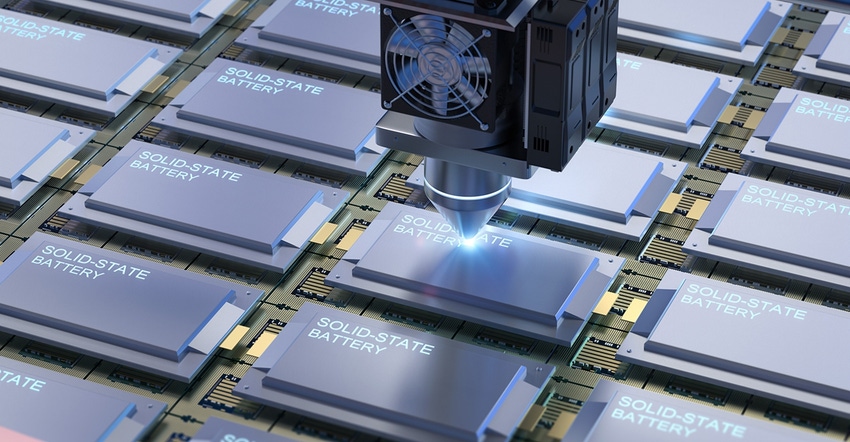Blue Current: Advancing Solid-State Battery Innovation
Blue Current transforms battery technology, achieving milestones in energy density, safety, and scalability. A significant advancement for next-gen EVs and mobile devices.
December 5, 2023

Blue Current, Inc., an American battery developer in the all-solid-state battery (ASSB) industry, announced a series of technical achievements, expanded partner engagements, and funding. The company recognizes and is instead committed to delivering a complete chemistry system that will be safe, high energy, and scalable with the same high-volume manufacturing equipment used in the traditional lithium-ion (LIB) manufacturing industry. This will enable engineers to create thinner, lighter, and lower-cost systems that were impossible before.
Strategic investment and partnerships
Blue Current continues to expand its investment and industry partnerships carefully. During 2023, new and existing investors, including Koch Disruptive Technologies (KDT), Piedmont Capital, and Umicore, began or continued investment. The company is using this added funding to complete its 22,000-square-foot pilot manufacturing facility at its headquarters in Hayward, California. The pilot will be used to prove its batteries can be scaled economically using high-volume LIB manufacturing equipment.
Battery technology for next-generation EVs and mobile devices
For next-generation EVs and mobile devices to succeed, a leap forward is needed with battery technology. To achieve this, most of the industry has been working to add highly engineered (and costly) silicon anode materials to traditional LIB cells or to develop lithium metal cells paired with liquid or gel electrolytes. These approaches offer the potential for higher energy but are expensive and complicated to scale. Lithium metal is also highly flammable, leading to safety concerns. To compensate, engineers must design safety at the system level with protective structures, fire-retardant materials, and complex thermal management systems. This increases product costs and limits the potential for system-level energy density improvements. Blue Current is taking a different approach.
Blue Current's three technological advancements
The company's technology addresses three critical performance vectors. It maximizes energy density through the highest possible silicon content. The need for expensive packaging material is eliminated since Blue Current's battery cycles well at low operating pressure. Blue Current's battery is also safe and completely dry without flammable liquid or gel electrolyte materials used in traditional LIB.
“It's clear from our progress in 2023 that there is continued and growing interest to move the EV industry forward using a silicon-first approach,” stated Kevin Wujcik, CTO at Blue Current. “Fully dry solid electrolytes are critical to achieving high silicon content anodes. The progress we've made developing elastic composite electrolyte materials and enabling low pressure makes us uniquely capable of commercializing this approach, and we're excited about the feedback we're hearing from our partners.”
Blue Current claims that it is the first to deliver on all three of these metrics using what it refers to as a silicon-first approach with elastic composite electrolyte technology.
Milestones achieved in 2023
Blue Current has achieved the following milestones in 2023 thanks to its technological advances.
Steady improvement in energy density with over 100 Wh/L added in 2023. Current density is comparable with LIB, and the company has a defined development path to 1000 Wh/L, 30% higher than state-of-the-art LIB cells
10x higher silicon anode active material content versus state-of-the-art LIB cells while maintaining a long life of>1000 cycles. This enables a 50% reduction in anode thickness.
Fully dry multi-layer cells with cycle performance on par with the company's single-layer cells. This is an order of magnitude lower than much of the published research on fully dry ASSB technology.
Unique IP covering materials and material integration of composites to enable low-pressure operation. This builds on the company's 22 patent families and associated trade secrets.
Ongoing safety testing shows that thermal stability is substantially higher than traditional LIB battery cells. This includes ARC, crush, DSC, nail penetration, and overcharge testing.
“We hear all the time from customers who tell us that safety equals increased cost at the pack and system level and that they need batteries that are both safe and energy dense simultaneously,” concluded Ben Eiref, CEO at Blue Current. “This was our vision from the start. We see a future where batteries are fully dry and inherently safe by default and powered by silicon, the most abundant material on earth.”
About the Author(s)
You May Also Like





